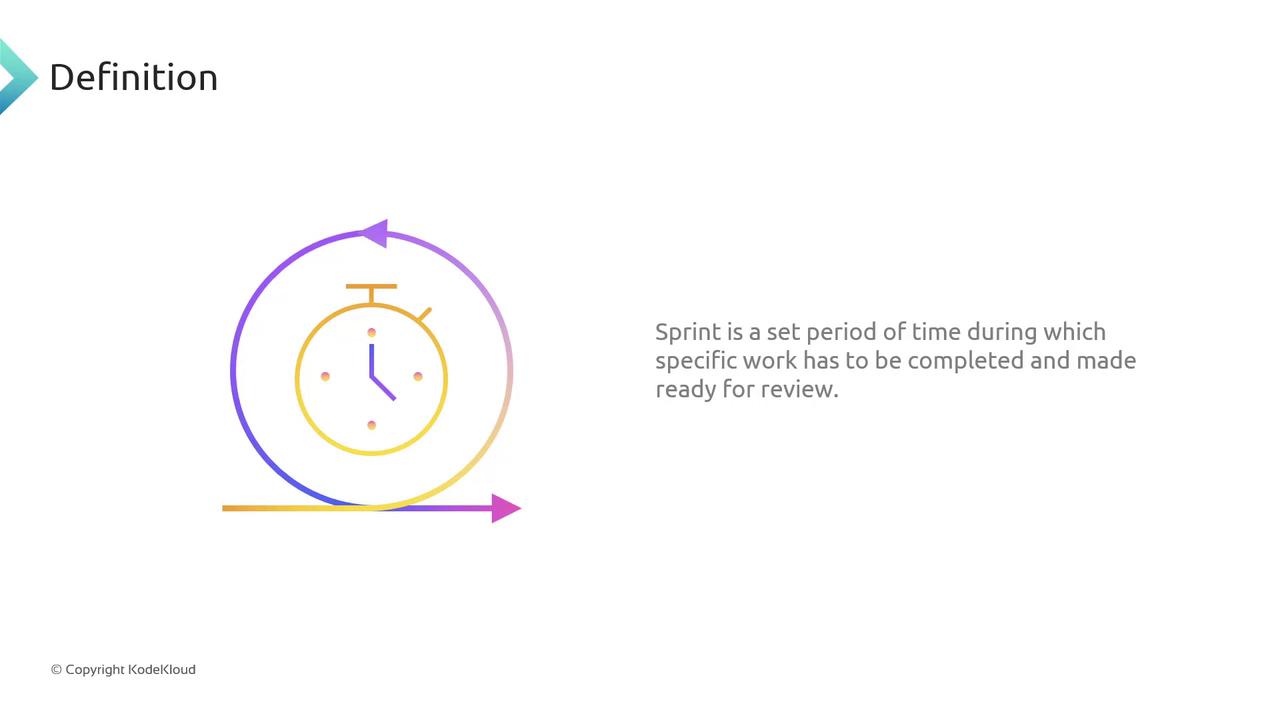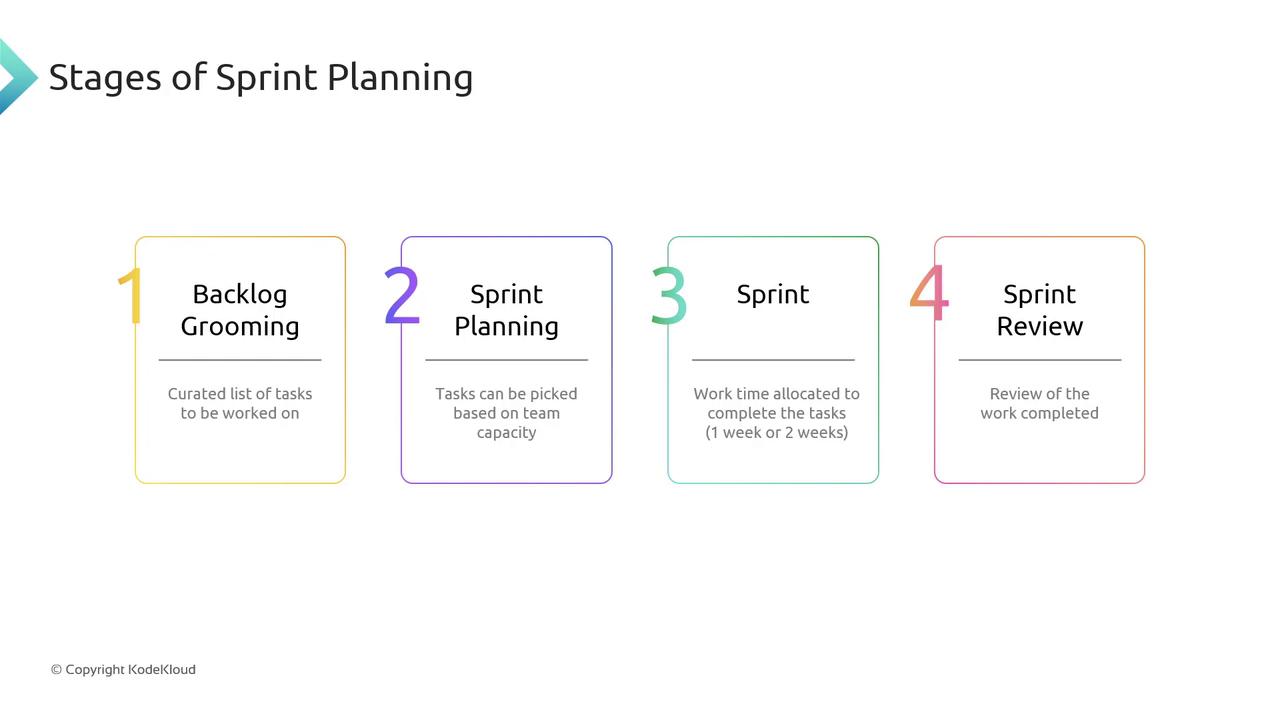GCP DevOps Project
Introduction
What is a sprint
In Agile development, a Sprint is a fixed timebox during which a team works to complete a set of prioritized tasks and deliver incremental value. Understanding this concept is key to efficient Sprint planning and execution.
A Sprint is a set period of time during which specific work has to be completed and made ready for review.

The Baker Analogy
Consider a baker who aims to produce quality loaves of bread. His workflow includes:
- Import good-quality wheat
- Store the wheat properly
- Ferment the dough
- Prepare the dough
- Bake the bread
He prioritizes tasks based on the value they deliver:
![]()
Although every step is required, importing top-grade wheat has the greatest impact on the final product. When the baker packages this prioritized workflow into a fixed timebox (for example, one morning), that timebox becomes his Sprint.
Translating to DevOps
A DevOps team operates similarly, with:
- A desired outcome (feature, bug fix, release)
- A backlog of tasks ranked by priority
![]()
In each Sprint, the team:
- Defines the scope (what will be done)
- Executes the selected tasks within a fixed timeframe
Note
Timeboxing a Sprint helps teams focus on delivering the highest-value items and avoids scope creep.
Stages of a Sprint
Below is an outline of the four core stages in a Sprint cycle:

| Stage | Purpose | Key Activities |
|---|---|---|
| Backlog Grooming | Refine and prioritize work items | Clarify requirements, estimate effort, rank by business value. |
| Sprint Planning | Select tasks matching team capacity | Commit to items for the upcoming Sprint based on velocity. |
| Sprint Execution | Build and deliver functionality | Complete tasks, handle blockers, collaborate continuously. |
| Sprint Review | Validate and demonstrate completed work | Showcase deliverables, gather feedback, update backlog. |
1. Backlog Grooming
- Curate and refine the product backlog.
- Assign priority and ensure each item has clear acceptance criteria.
2. Sprint Planning
- Choose backlog items that match the team’s capacity (e.g., 3 engineers over 2 weeks).
- Break down tasks further if needed.
3. Sprint Execution
- Work within the agreed timebox (commonly 1–2 weeks).
Warning
Do not add new tasks mid-Sprint—this disrupts focus and the planned scope.
- Escalate blockers to the Product Owner or Scrum Master for prompt resolution.
4. Sprint Review
- Demonstrate completed work to stakeholders.
- Verify each task meets the acceptance criteria and collect feedback for future Sprints.
All of this aligns with the principles of Agile software development. Some teams may opt for Kanban or other frameworks, but the Sprint-centric approach is widely adopted for its predictability and focus.
References
Watch Video
Watch video content